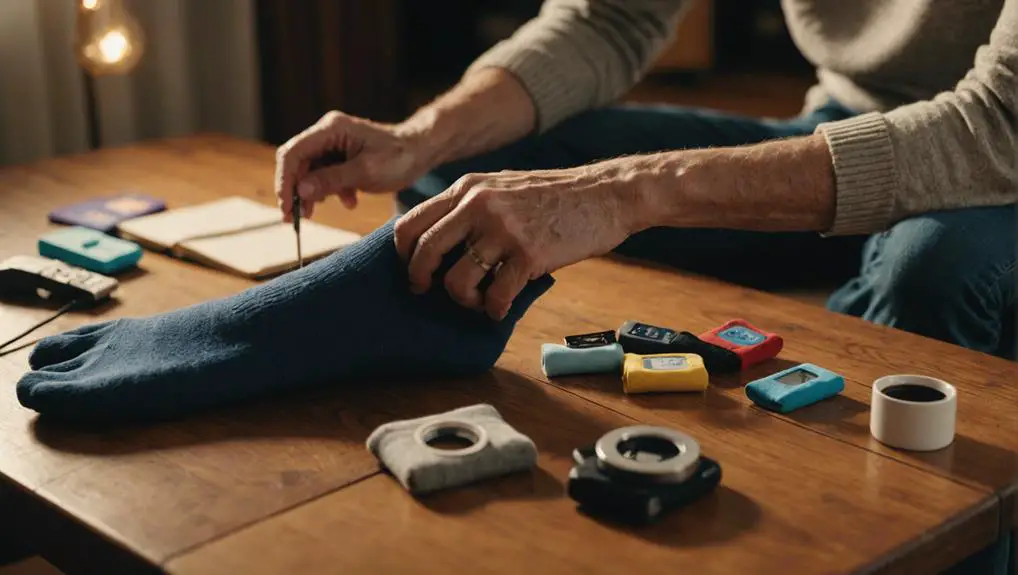Here is your detailed guide to Parkinson’s Disease. The burden of neurological diseases on economies is increasing worldwide, and Parkinson’s disease is becoming prominent among these due to its increasing number over decades. It’s not new to humankind; it was discovered by James Charles back in 1817.

Parkinson is a progressive neurodegenerative disease that exhibits several motor and non-motor symptoms.
Also, you have to check out my post on the Best 8 Beds and Mattresses for Parkinson’s Patients in 2023.
Parkinson’s affects around 1% of the world’s population, and its incidence keeps rising with increasing age and peaks over 60years of age.
Table of Contents
What Is Parkinson’s Disease? Detailed Guide To Parkinson’s Disease
Parkinson’s disease is a neurological and a degenerative disorder that occurs due to the pathophysiological changes in a person’s brain and, more specifically, in substantial Niagara; this area of the brain has cells designed for dopamine production.
Dopamine is a neurotransmitter required to connect the signalling pathway between substantia Niagara and the corpus striatum to regulate cognitive functions.
Loss of these dopaminergic neurons results in dopamine depletion, resulting in Parkinsonism. Initially, the person loses control over movements, and as the disease progresses, symptoms become more profound.
Difference Between Parkinson’s Disease And Parkinsonism
Parkinson’s disease: it’s a progressive neurodegenerative disease characterised by tremors, rigidity, and slows in coordinate movement, usually affecting above 60 years older men.
Parkinsonism: It is a broad term that consists of Parkinson’s disease and other conditions with a like pathology such as multiple system atrophy or cortico-basal degeneration.
Stages Of Parkinson Disease
Parkinson’s disease is a progressive disease taking years to develop. Margaret Hoehn and Melvin introduced a staging system. In today’s world, this staging scale has been upgraded by MDS-UPDRS (Movement Disorder Society-Unified Parkinson’s disease).
It Compromises Of 4 Stages:
- Patient starts to experience Non-motor symptoms while doing daily activities.
- Motor symptoms interfere with daily activities of life.
- Examination of the motor system
- Complications of the motor system
Signs And Symptoms Of Parkinson’s Disease:
Motor symptoms
- Tremor (trembling or shaking of a limb) is usually the initial symptom.
- Rest tremors, also known as pin rolling tremors
- You can also experience another type of tremor.
- Bradykinesia (slow movement)
- Akinesia (loss of movement)
- Rigidity
- Reduced facial expressions (mask-like face)
- Stooped posture
- Shuffling / trembling gate
Non-motor symptoms:
- Emotional disturbances such as Depression and apathy
- Sleep and behavior disturbances
- Difficulty in swallowing and speaking
- Cognitive impairment
- Urinary and Gut problems
- Changes in skin
What Causes Parkinson Disease?
Although the cause is unknown, There are several factors are associated with it which are under consideration for contributing to Parkinson’s disease.
- Genetic factors
- It’s seen to be running through families and thus genes. Any person getting Parkinson’s disease is most likely to have a first degree relative having a history of Parkinson disease.
- Around 9 genes have been discovered now, which are under review for being the cause of familial Parkinson’s disease at any age.
- Some of these known genes are Parkin, glucocerebrosidase, and PINK1; their mutations can lead to this disease.
- Environmental factors:
- There are several toxins in the environment when the human body is exposed. It increases the probability of several diseases, one of which is Parkinson’s disease.
- Some of these toxins are
- Herbicides (parquat) , pesticides , insecticides ( Permethrin ), fungicide
- CO poisoning
- Dust of manganese
- Carbon disulfide
- Aging
With growing age, loss of dopaminergic neurons leads to loss of dopamine.
- Idiopathic Causes
- Lewy bodies present In the brain: a collection of Lewy bodies within the brain can be the most initial and significant clue for Parkinson’s disease. Lewy bodies can be considered one of the markers for Parkinson’s disease.
- Presence of Alpha-synuclein: Lewy bodies consist of many substances, one of which is alpha-synuclein. In patients with Parkinson’s disease, this protein is found in Lewy bodies in abundant amounts.
- Drugs.
Several medications can produce Parkinson-like effects as their side effect. Although such a drug’s effect is reversible, the signs disappear once they are stopped. However, if taken for a very long period, the effects can become permanent. Some of the medicines that cause such effects are
- Neuroleptics (antipsychotics)
- Dopamine depleting drugs.
- Antiemetics.
- Calcium-channel blockers.
- Mood stabilisers.
- Antidepressants.
- Anti-epileptic drugs.
Risk Factors
- Age: This disease occurrence is seen more in middle age and above ages. The probability of this disease increases with progressing age. This disease peaks at 60 years of age.
- Gender: The ratio of this disease is seen more in men than women.
- Familial Parkinson’s disease: Parkinson’s genes run from one generation to the next generation in some families. However, chances are still less if it’s not your first-degree relative.
- Toxic substances: Environmental toxins and pollution increase the risk.
Complications
- Dysphagia: Slow and difficult swallowing leads to saliva accumulation and drooling. At later stages, as muscles lose their abilities, chewing can become complicated, leading to choking, poor nutrition, and poor overall health.
- Emotional changes: Patients can sometimes experience emotional lability and Depression in the very early stages of Parkinson’s disease. Psychological changes, though, can be improved by therapy and medicines.
- Hyposomnia: The patient may have trouble falling or waking up from sleep. They can fall asleep at odd times of the day. They can also suffer from rapid eye movement (REM).
- Excretory and defecation problems: patient’s detrusor muscle (bladder muscle) may become weak, resulting in the inability to control urine. Due to poor gut motility, they also develop constipation.
- Some other complications patients can experience are:
- Orthostatic hypertension
- Hyposmia or Anosmia
- Sexual dysfunction
- Generalised body aches and pain
- Fatigue
Prevention
- As several aspects of Parkinson’s disease remain to unfold, there are no clear guidelines for preventing this disease.
- A good healthy diet and some exercise are familiar grounds to prevent many
- diseases.
- While some research has shown the preventive role of caffeinated drinks and green tea.
Diagnosis
It’s one of the diseases whose diagnosis lies clinically more than on laboratory investigations. Once a suspected patient needs to get some lab work and radiological investigations done. A detailed medical history and careful physical examination are essential tools for physicians to correct clinical diagnosis.
Laboratory and radiological investigations to conclude whether it’s Parkinson’s disease or any other neurological disorders:
- Complete Blood Profile (To rule out other types of Parkinsonism)
- CT scan.
- Genetic testing.
- MRI
- PET scan.
Investigations to detect alpha-synuclein proteins
- Spinal tap: Through lumbar puncture, cerebrospinal fluid (CSF) Is obtained. This CSF is then checked for alpha-synuclein.
- Nerve biopsy: Nerve tissue is also biopsied from the back and legs through the skin. This is then checked for alpha-synuclein.
Treatment
There is no definitive treatment that can treat Parkinson’s disease. It merely depends upon symptomatic treatment.
- Medical treatment:
The medical treatment aims to compensate for the dopamine deficiency by giving dopamine in exogenous forms and increasing its levels in the brain.
- Levodopa-carbidopa is taken simultaneously to reduce side effects and maximise efficacy. It’s to be taken lifelong. It’s the mainstay and first-line drug for Parkinson’s disease.
- Dopamine agonist for increasing dopamine levels.
- MAO inhibitors and COMT inhibitors inhibit the enzymes involved in the degradation of dopamine.
- Amantadine for uncontrolled involuntary movements
- Anticholinergic drugs for rigidity and tremors.
The surgical option involves “DEEP BRAIN STIMULATION, ” implanting electrodes and sending electrical currents to the brain. It’s a painless method to stimulate specific areas of the brain that can help with movement disorders such as tremors and rigidity.
- Physical therapy for gait
- Speech therapy for speech disturbances
- Occupational therapy
- Healthy diet
- Exercises to strengthen weakened muscles.
- Massage helps to reduce tension build-up in muscles.
- Yoga and taichi increase flexibility and reduce rigidity.
Prognosis
- Specific investigations can monitor disease progression and the effect of the treatment.
- The Hoehn and Yahr scale is also used for calculating the progression of disease. This scale has stages 0 to 5, where zero means no signs of Parkinson’s disease, with five being the advanced stage of Parkinson’s disease.
- This was later modified and is now used as the “modified Hoehn and Yahr scale.”
Personalities With Parkinson’s Disease
- Muhammad Ali (Diagnosed with PD in 1984)
The famous boxer Muhammad Ali developed Parkinson’s disease later on in life. He was appreciated not only as a boxer but also for his for his charity work. After 2 years of retirement, he developed Parkinson’s disease, but he didn’t let the disease come his way. Despite the disease, he still participated in the inaugurating event of the Olympics. He created awareness and contributed to the research of Parkinson’s disease.
- George H.W. Bush (Diagnosed in 2012)
Remembered for his services as president of the United States of America, George Bush developed vascular Parkinsonism. He died at the age of 94 and became the longest living president of state despite the debilitating disease.
- Bob Hoskins (Diagnosed with PD in 2011)
Renowned actor of London and Emmy award winner who is known for his excellent acting skills in ‘ ‘pennies from Heaven,’ ‘The Long Good Friday, and Hook .’Diagnosed with Parkinson’s in 2011 but succumbed to death due to pneumonia by age 71.
- Alan Alda
In a show, the actor in ‘Marriage story’ said that several exercises, which include swimming, boxing, juggling, and tennis, help delay the disease’s progress. He was optimistic and wanted to share his story so others suffering from the disease could live in the hope of a better life.
- Neil Diamond: (Diagnosed in 2018)
Singer of ‘Sweet Caroline ‘and ‘Red, Red wine’ was diagnosed with Parkinson’s disease in 2018. Due to his disease, he had to declare retirement during his tour because disease became a hurdle for his performance. His career and his contribution to the industry were appreciated by awarding him a lifetime achievement award at the Grammy award show in 2018.
- Linda Ronstadt
Rich soprano vocalist lost her ability to speak and sing due to a lack of muscular activity. She had a subtype of Supranuclear palsy (PSP).
She told People in 2019, “In my mind and in my thoughts, I still sing.”
- Michael Richard Clifford (Diagnosed in 1994)
The NASA astronaut who had successfully made three flights to space. He was diagnosed with Parkinson disease when he was 42 years old. Despite being diagnosed with PD, he continued his space flights. He has been awarded the ‘Public Leadership in Neurology Award.
- Ben Petrick (Diagnosed in 2000)
The baseball player was diagnosed with Parkinson’s disease just at the age of 22. Although he could not pursue baseball, he wrote several books, such as ‘Forty thousand to One .’His father also had Parkinson’s disease.
Conclusion
Although Parkinson’s disease is a debilitating disease that will worsen over time, a healthy diet and aerobic exercise can effectively delay the damage.
Also, make sure to check out my post on What Is Parkinson’s Disease Life Expectancy?
All these renowned personalities teach us to live our life to the fullest and not let Parkinson’s disease come in our way because life is too short to live otherwise.

Hi, my name is Eddie, I am a professional trainer specializing in the elderly population and I’m also a website designer. I love training in the gym, going to the beach, traveling, and having good food.
I combined my love for sport and website designing to make “DisabilitEase” whose purpose is to help elderly and disabled people live a more full and active life, have more fun, and enjoy their unique journey despite any disability.


